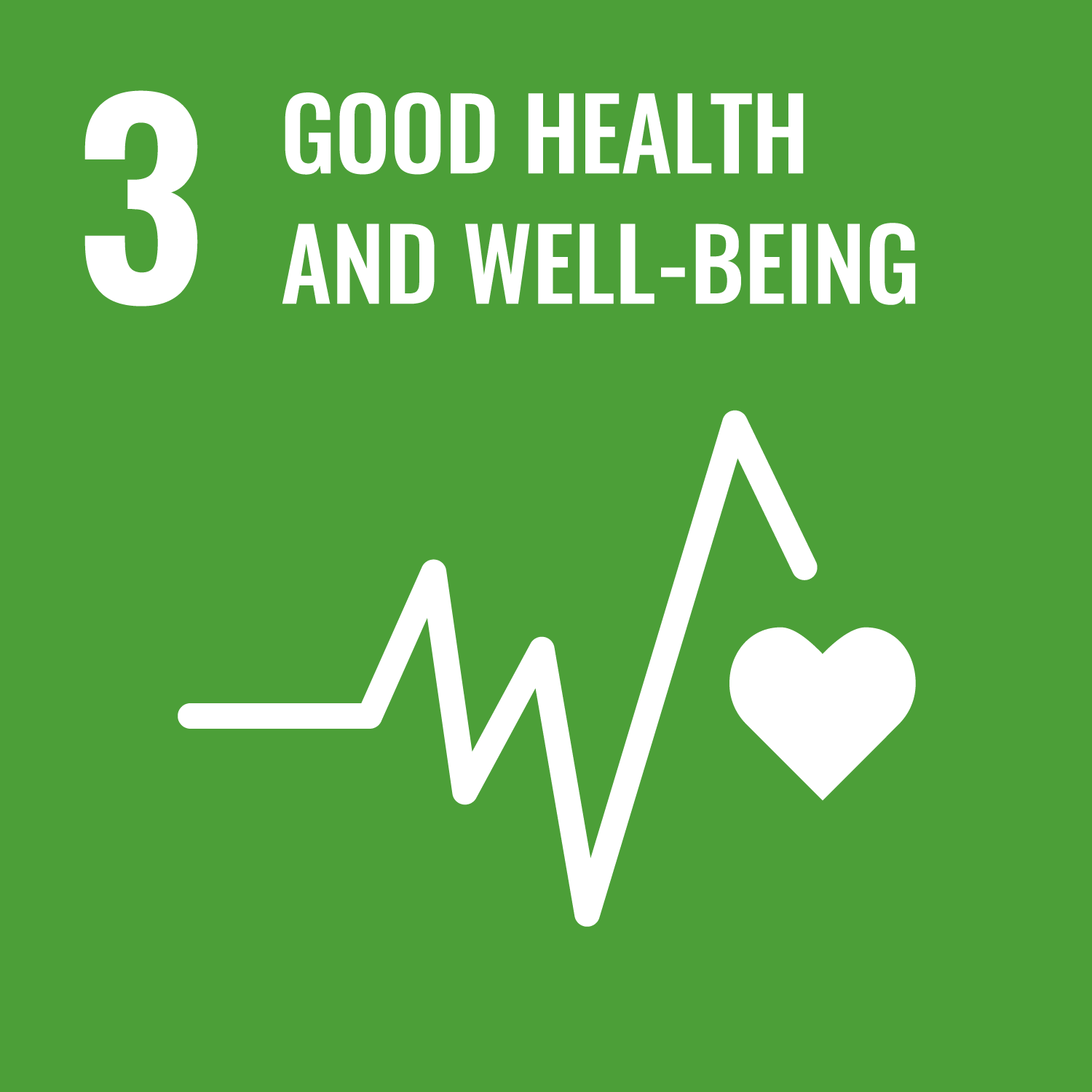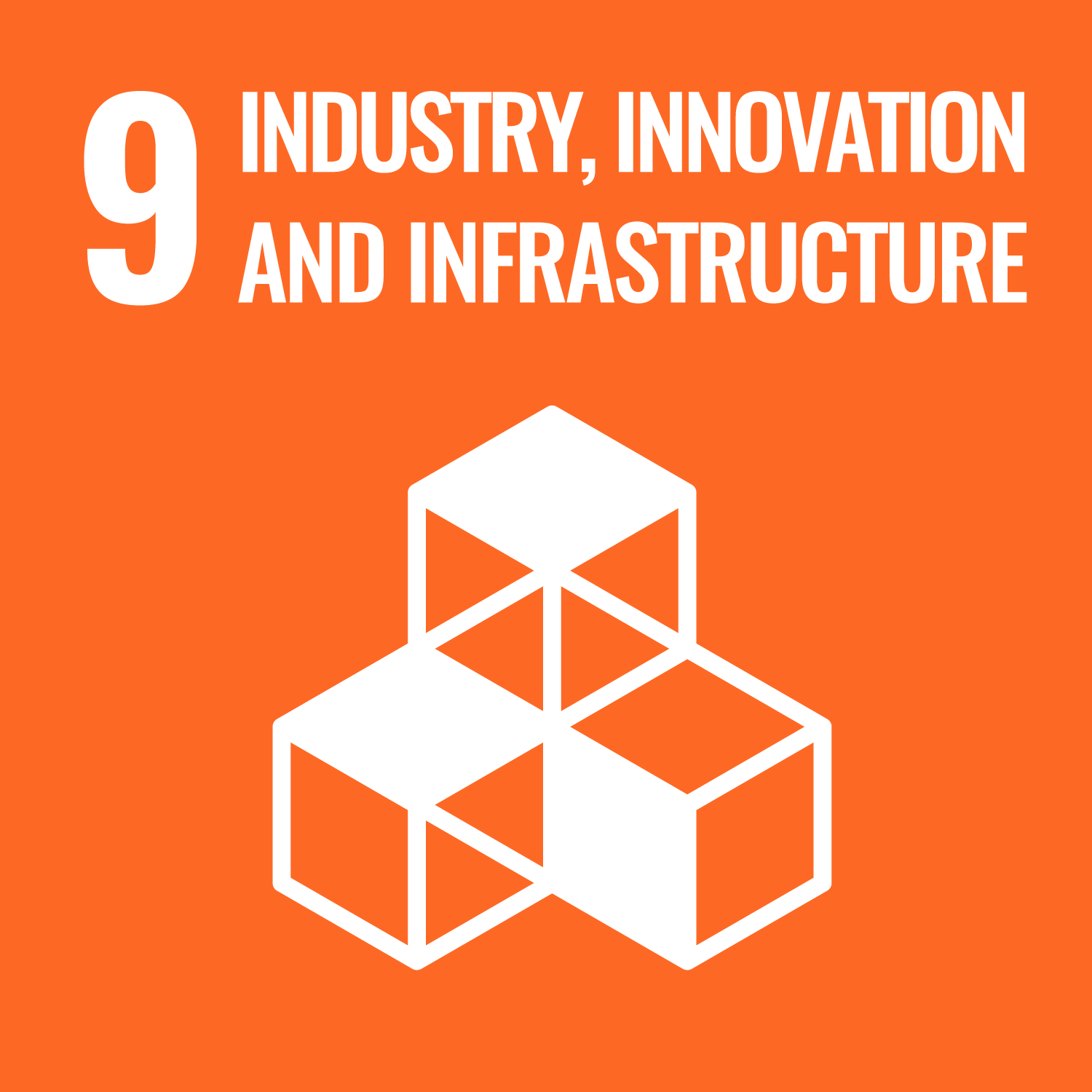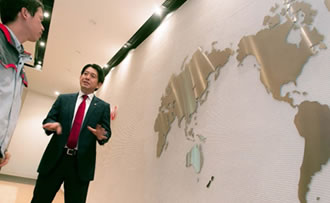
We support the Sustainable Development Goals
What is the SDGs?
Sustainable development goals (SDGs) are the international goals listed in “The 2030 Agenda for Sustainable Development”, which was unanimously adopted by member countries at the UN Sustainable Development Summit held in September 2015, aiming to realize a sustainable and better world by 2030. The SDGs consist of 17 goals and 169 targets, pledging to “leave no one behind” on the planet.

TATSUNO’s contribution for SDGs
Tatsuno Corporation supports the sustainable development goals (SDGs) advocated by the United Nations.
We at Tatsuno hereby declare that all our employees will work together to resolve common issues facing the international community and contribute to the realization of a sustainable society.
April 1, 2021
Hiromichi Tatsuno
Tatsuno’s Key Initiatives for the SDGs
-
 Strive to develop products and technologies that reduce hazardous substances discharged into the soil and atmosphere.
Strive to develop products and technologies that reduce hazardous substances discharged into the soil and atmosphere. -
 Eliminate gender discrimination and create a comfortable work environment.
Eliminate gender discrimination and create a comfortable work environment. -
 Strive to develop technologies and create products that prevent the outflow of hazardous substances into the soil and groundwater.
Strive to develop technologies and create products that prevent the outflow of hazardous substances into the soil and groundwater. -
 Promote the widespread use of sustainable and modern energy.
Promote the widespread use of sustainable and modern energy. -
 Embrace diversity and balance job satisfaction and social development.
Embrace diversity and balance job satisfaction and social development. -
 Promote innovation and contribute to the construction of a resilient energy infrastructure with our technologies.
Promote innovation and contribute to the construction of a resilient energy infrastructure with our technologies. -
 Promote the enhancement of everyone’s ability, regardless of country, race, religion, disability, or other circumstances.
Promote the enhancement of everyone’s ability, regardless of country, race, religion, disability, or other circumstances. -
 Contribute to a safe, resilient, and sustainable community development through the wide use of anti-disaster equipment.
Contribute to a safe, resilient, and sustainable community development through the wide use of anti-disaster equipment. -
 Reduce the amount of waste and hazardous substances discharged during the manufacturing process.
Reduce the amount of waste and hazardous substances discharged during the manufacturing process. -
 Mitigate the impact on climate change by promoting the spread of hydrogen energy.
Mitigate the impact on climate change by promoting the spread of hydrogen energy. -
 Activate partnerships with all stakeholders including business partners, distributors, agents, and affiliated companies.
Activate partnerships with all stakeholders including business partners, distributors, agents, and affiliated companies.
TATSUNO’s relevant activities for SDGs
Tatsuno is engaged in a wide range of businesses as an infrastructure company involved not only in petroleum energy but also in various forms of energy supply such as hydrogen, electricity, LPG, CNG, and LNG.
In order to promote these businesses, Tatsuno has set its sustainable development goals (SDGs).
Environmental contribution via technological development CLICK HERE
Hydrogen/gas filling machine
-
Tatsuno develops, manufactures, and sells hydrogen dispensers that fill FCVs (fuel cell vehicles) with hydrogen.
FCVs are becoming popular as environmentally friendly next-generation vehicles that do not emit carbon dioxide or nitrogen oxides, and the number of hydrogen stations has been increasing year by year.
Tatsuno’s dispensers are used in half of the hydrogen stations in Japan, and they are being installed overseas as well. We at Tatsuno are contributing to the popularization of FCVs by promoting the development of hydrogen stations through our hydrogen dispensers.In addition to hydrogen, we also manufacture and sell LNG and CNG dispensers to promote the popularization of environmentally friendly energy.


Vapor liquefaction recovery device
-
Tatsuno sells equipment that recovers vapor (vaporized gasoline) discharged from fueling stations and reverts it to gasoline (liquid).
This equipment reduces hazardous substances released into the atmosphere from fueling stations, such as gas stations, and allows us to efficiently use gasoline, which is a limited resource.
Soil environment measures
-
Tatsuno sells and installs resin-based underground tanks and underground piping.
Compared to conventional steel products, resin-based underground tanks and underground piping are more resistant to disasters such as earthquakes and reduce the risk of fuel oil leakage due to rupture or corrosion.
-
Tatsuno’s high-precision tank level gauge detects minute changes in the level of fuel oil in underground tanks.
Even in the unlikely event that a failure occurs in a underground tank, leaks will be detected at an early stage, minimizing environmental damage such as soil and water contamination.
-
Our Environmental Business Department systematically performs a series of work, ranging from survey of soil throughout Japan to analysis, purification, and restoration.
This business department investigates and analyzes the presence or absence of soil contamination by heavy metals, volatile organic compounds, and oil, and performs the most appropriate soil contamination countermeasures if contamination is detected.
Reduction of energy consumption CLICK HERE
Reduction of energy consumption
-
Our Yokohama Plant has acquired environmental ISO 14001 certification and is promoting energy-saving as part of our environmental considerations.
This plant is saving electricity by switching to LED lighting that consumes less power for lighting used in the plant, and by installing motion sensors.
-
The plant is also striving to save energy by introducing energy-efficient equipment at production sites.

Utilization of clean energy CLICK HERE
Introduction of renewable energy
-
Solar panels are installed on the roof of South Building No. 3 of the Yokohama Factory, and approximately 4.5 MWh of electricity is used annually for plant operation.

-
FC forklifts running on hydrogen fuel are in operation at the Yokohama Plant.
FC forklifts do not emit CO2 during use, so they have a low impact on the environment and are also suitable for use indoors where ventilation conditions are poor.
In addition, hydrogen filling equipment for FC forklifts is installed on the premises of the plant, and the hydrogen is produced from water and sunlight.
Disaster countermeasure equipment by TATSUNO CLICK HERE
Disaster-response service station and disaster prevention equipment
-
The fuel supply facilities are designed to be earthquake-proof and fire-resistant and play an important role in supporting lifelines even in the event of an earthquake.
Tatsuno not only undertakes the construction and maintenance of robust and safe fuel supply facilities, but also provides equipment such as emergency generators and battery dispensing pumps to continuously supply fuel in the event of a disaster, thereby contributing to the creation of fueling stations that will serve as disaster response bases in the region.Many disaster preventing devices, such as our emergency battery “Rescue Charger” and portable kerosene-fueled cooking unit “Rescue Kitchen”, are installed in places other than gas stations, such as schools and office buildings, contributing to the development of disaster-resistant communities.



Reduction of environmental load by IT CLICK HERE
Utilization of digital technology
-
Tatsuno is promoting paperless operations through digitalization as part of our efforts to improve operational efficiency and environmental conservation.
We have reduced our paper consumption by switching from paper media to e-commerce for contracts and other transactions.
At our manufacturing sites, we are also working to reduce the amount of paper resources by changing checklists and other documents to data entry on tablets.In addition, we are building a comfortable work environment that allows employees to telework by promoting data sharing in our daily operations and by going paperless with our circular notices and materials.
In the future, we will develop data sharing systems to further improve operational efficiency.
Tatsuno strives to create a company that is environmentally friendly and easy to work at by actively incorporating digital technology.
Promotion of diverse work styles CLICK HERE
Creating comfortable workplace
-
[Encouragement to take consecutive days off]
Our employees are granted 12 days of annual paid leave from the time they join the company.
In addition, Tatsuno has an annual paid vacation system that encourages employees to take three consecutive days off every six months.
This system is used for self-development activities such as travel and qualification acquisition as taking a long vacation combined with holidays is easy.
-
[Encouragement to take parental leave and nursing care leave]
Under the normal parental leave and nursing care leave systems, there is no pay during the leave period (benefits are paid by employment insurance), but Tatsuno provides a salary for the 31 days off.
We encourage all of our male and female employees to take parental leave and nursing care leave by supporting their income.
-
[Recruitment of foreigners]
Having a global recruitment policy regardless of gender or nationality, Tatsuno currently has many employees of different nationalities working at the company.
As part of our consideration for diverse cultures and customs, the Yokohama Factory has a prayer room, which is freely available for everyone to use.
Relationship with the local community CLICK HERE
Environmental education for children
-
Tatsuno has a showroom in its Yokohama Plant.
In this showroom, we introduce the latest service station equipment that pursues safety, security, and environmental conservation, as well as our products, technologies, and our efforts in each business.In addition, tours for elementary and junior high school students are also held, such as “Children’s Adventure” organized by Yokohama City and “Parent-child social studies field trip” organized by Sakae Ward, Yokohama City.
During the tour, we introduce the participants to our Eco Stage, a device that reduces the discharge of gasoline vapor, and provide everybody with an opportunity to learn about the mechanism of fuel cell vehicles (FCVs) that run on hydrogen to achieve decarbonization.

Establishment of global partnership CLICK HERE
Tatsuno’s overseas expansion
-
Tatsuno has a network of eight overseas subsidiaries and sells Tatsuno products through local distributors in 70 countries and regions around the world.
We regularly provide manufacturing guidance, safety education, and technical training to improve the technical skills of overseas Tatsuno workers, thereby helping to build infrastructure in each country.
Improvement of supply chain management CLICK HERE
Supply chain management
Tatsuno is involved with fuel dispensers at various stages from manufacturing to sales, installation, and disposal of fuel dispensers.
We are striving to make improvements while taking into consideration the environmental impact that occurs in the supply chain.
SDGs in Fuel Dispenser Supply Chain

-
Strengthening Positive Effects
- Development of new environmentally friendly features and energy-efficient design
- Improvement of productivity at each plant by promoting efficiency through process control
- Promotion of a fair trade system based on the rules of the World Trade Organization (WTO)
- Job creation and improvement of high-level economic productivity through construction guidance and maintenance technical guidance
-
Minimizing Negative Effects
- Adoption of design and selection of raw materials with a small environmental load
- Management of wastewater containing hazardous substances and change to a manufacturing process that does not generate waste oil
- Reduction of environmental load through labor-saving efforts in production lines and introduction of renewable energy
- Reduction of environmental load by selecting packaging and shipping methods that are efficient for transportation
- Reduction of the risk of leakage of hazardous substances by providing appropriate installation guidance and performing regular maintenance
- Reduction of environmental load by complying with the Waste Disposal Act and implementing recycling and reuse

